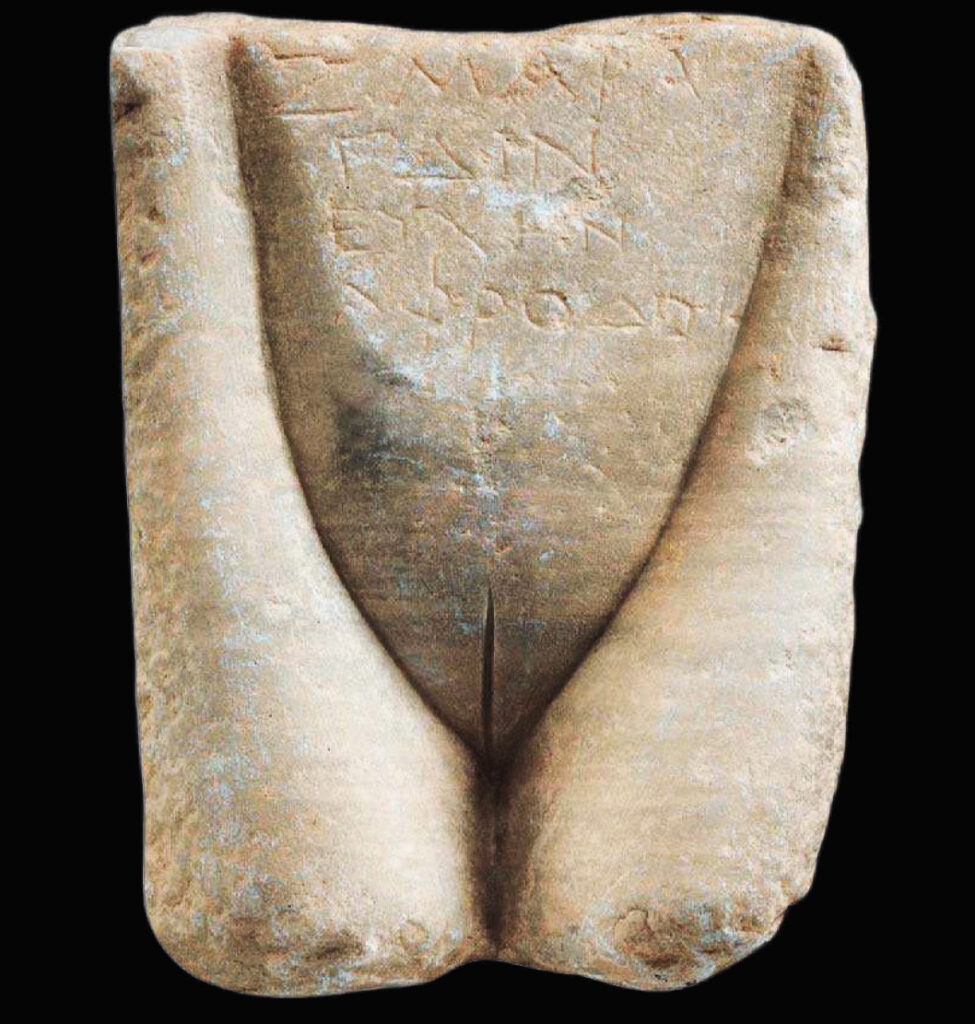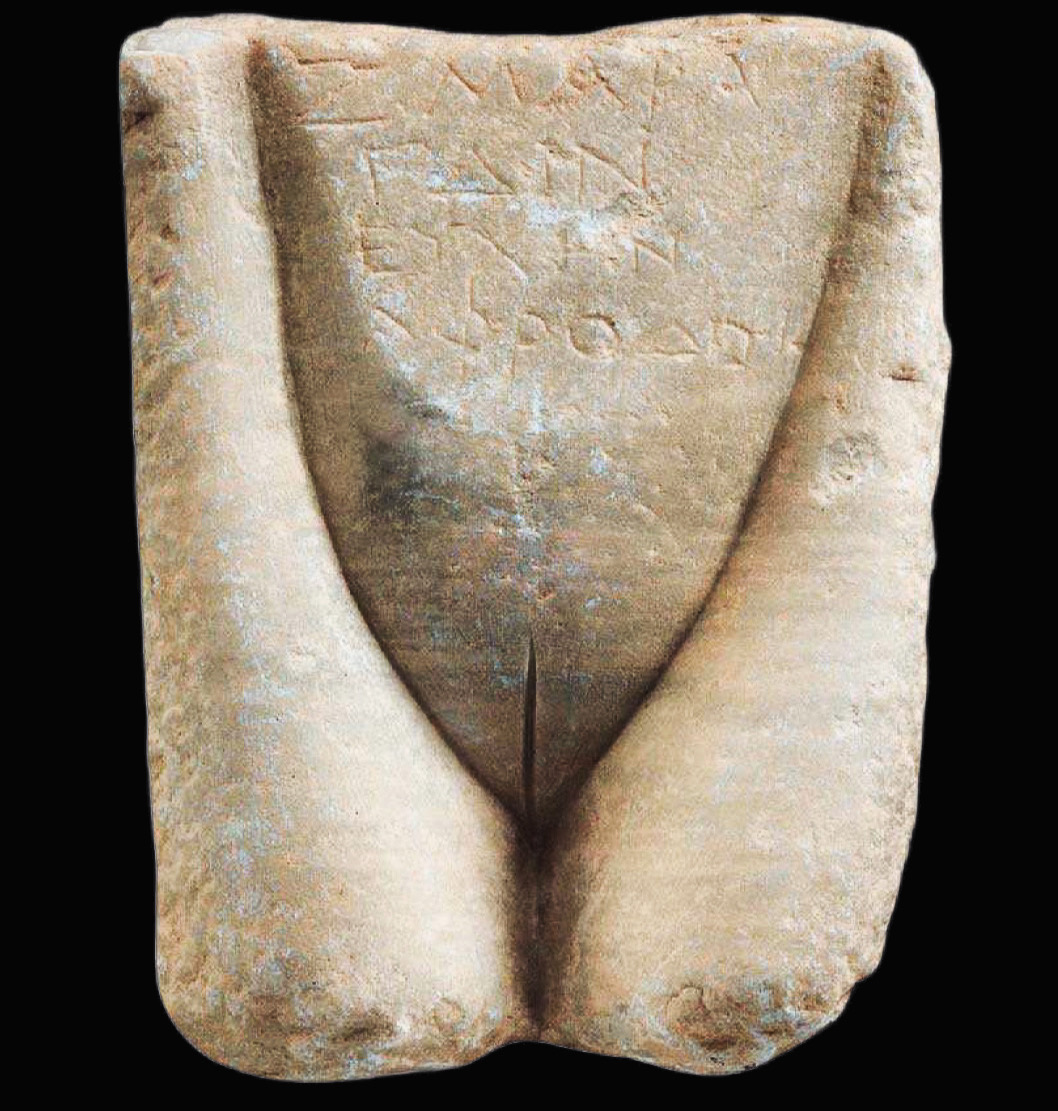Stark and stylized and utterly exposed, this little marble plaque is something of an oddity, but an oddity with a fun find-spot and somewhat helpful inscription. Female nether parts are shown – what’s the delicate term these days? Maybe one should stick to the Latin ‘pudenda’ (‘shameful parts’), but it seems a bit judgy.

It was found on Samos, at the marshy site of the extra-urban sanctuary to Aphrodite ‘of the reeds’ described by ancient authors and allegedly established by the courtesan hangers-on of Pericles’ 5th century B.C. military foray to the island. Archaeologists have dated it to the 2nd century B.C. (presumably based on context) but those spare, elongated lines would be at home even many centuries earlier.
Dedicating disjointed body parts and organs in sanctuaries was an enduring (and exceptionally charming) tradition across the Mediterranean, usually beseeching a deity to cure specific ailments or retroactively thanking them for doing so. More often in terracotta, the whole gamut of bits from head to toe and everything in between litter sanctuaries of healing gods.
The inscription ‘Zmargdeion thanks Aphrodite’ makes clear this was a votive dedication to the goddess. But I have questions! Is this a man’s name? And thanks for what, anyway? Was this relatively fancy object in thanks for resolving some feminine affliction, or rather a gift left by a grateful mate?
(I also wonder about the marble – that strong blueish veining reminds me of the stone used to such great effect for Samos’s colossal kouros).




